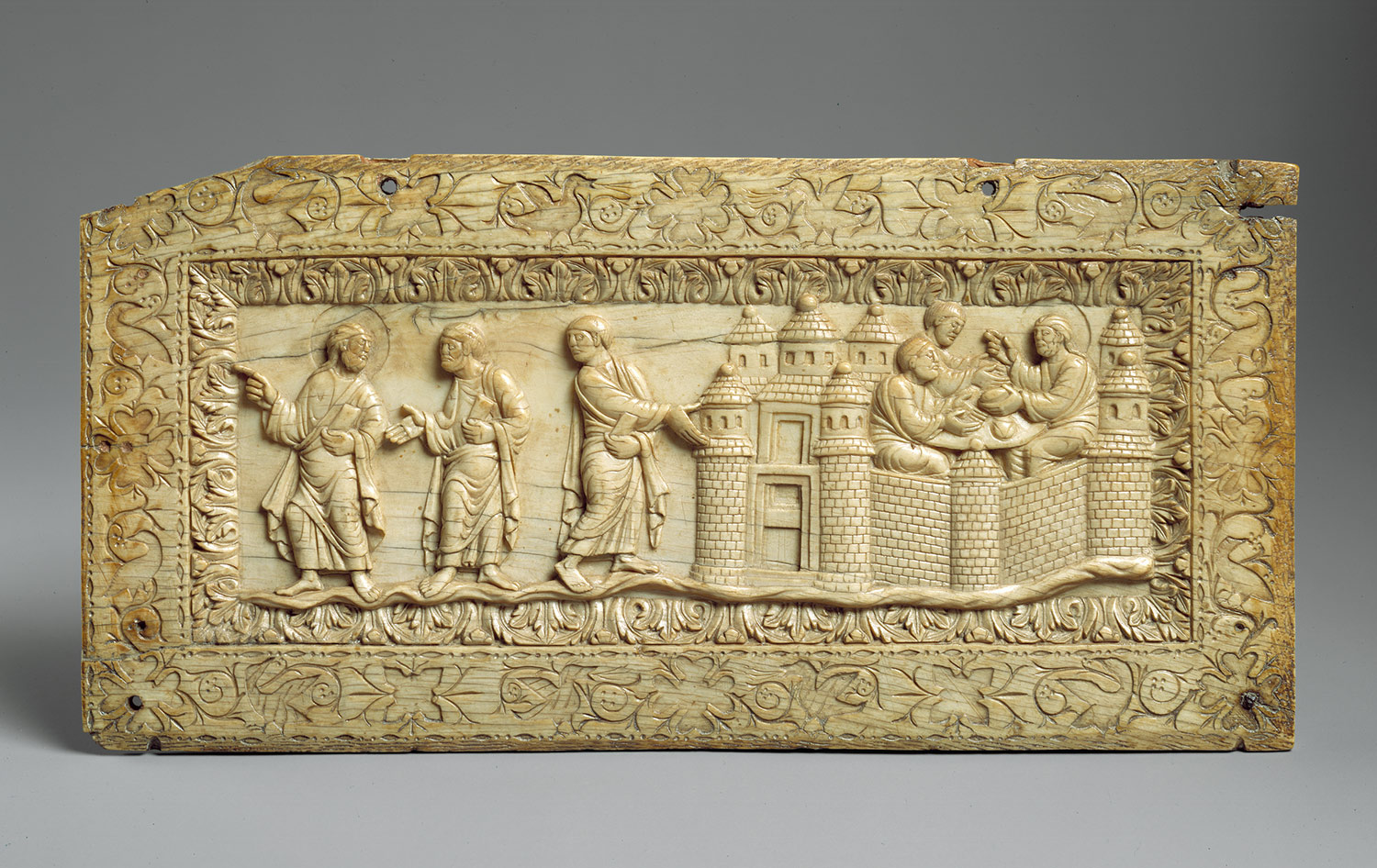The Caroliginian Renaissance refers to the time of a certain type of culture that arose when Charlemagne became ruler. Charles was so into latin that he had many writers write in latin. Before Charlemagne was in charge the people had a lot of metal in their art, he merely added on to that. The picture below is the story of Christ's supper. You can tell it is from the Carolginian era because of how full of life the figures are. 

Charlemagne also had a large effect on the architecture of his time. Charlemagne respected the greatness that Rome had and wanted to mirror that. The architecture of that time imitated Roman architecture but also had hints of Early Christian architecture and the architecture from the Byzantine era. All of these elements added together ended up in a very distinctive type of construction. A good example of the mix of these different cultures would be the Palatine Chapel in Aachen. It has hints of the Byzantine era when Justinian ruled because of its shape, octagonal, like the Justinian church in Ravenna. The touch of Carolingian can be seen in one of the entrances that is colossal. It is an idea from the Carolingian time called "westwork." "A westwork (also westwerk, the German word) is the monumental, west-facing entrance section of a Carolingian, Ottonian, or Romanesque church.

The exterior consists of multiple storeys between two towers. The interior includes an entrance vestibule, a chapel and a series of galleries overlooking the nave."("Westwork").
In the art of that day, especially in manuscripts, you would find that much of the art are depictions of the old testament. The covers of these manuscripts would be covered in gold and precious jewels and stones. The panels would be set by ivory.

citation:"Plaque with Emmaus Scenes [French] (1970.324.1)". In Heilbrunn Timeline of Art History. New York: The Metropolitan Museum of Art, 2000 ndash;.
http://www.metmuseum.org/toah/ho/06/euwf/ho_1970.324.1.htm (September 2009)
Drogo Sacramentary. Digital image. Wikipedia. Wikipedia. Web. 18 Mar. 2010. .
Plaque with Emmaus Scenes. Digital image. Metropolitan Museum of Art. MetMueseum. Web. 18 Mar. 2010. .
Sorrebela, Jean. "Carolingian Art." Metropolitan Museum of Art. MetMueseum. Web. 18 Mar. 2010. .
"Westwork." Westwork. Wikipedia. Wikipedia. Web. 18 Mar. 2010. .
No comments:
Post a Comment